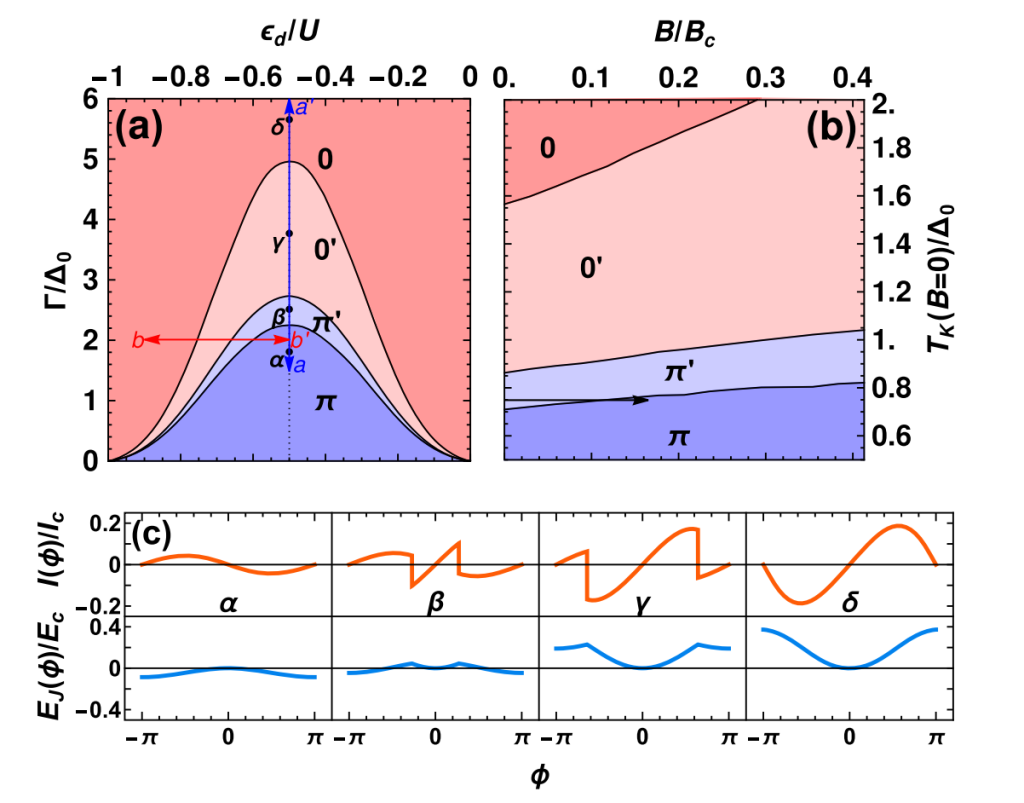Gloria Platero, premio Emmy Noether: “Un profesor me dijo que las chicas quitábamos el trabajo a los hombres por estudiar Física”
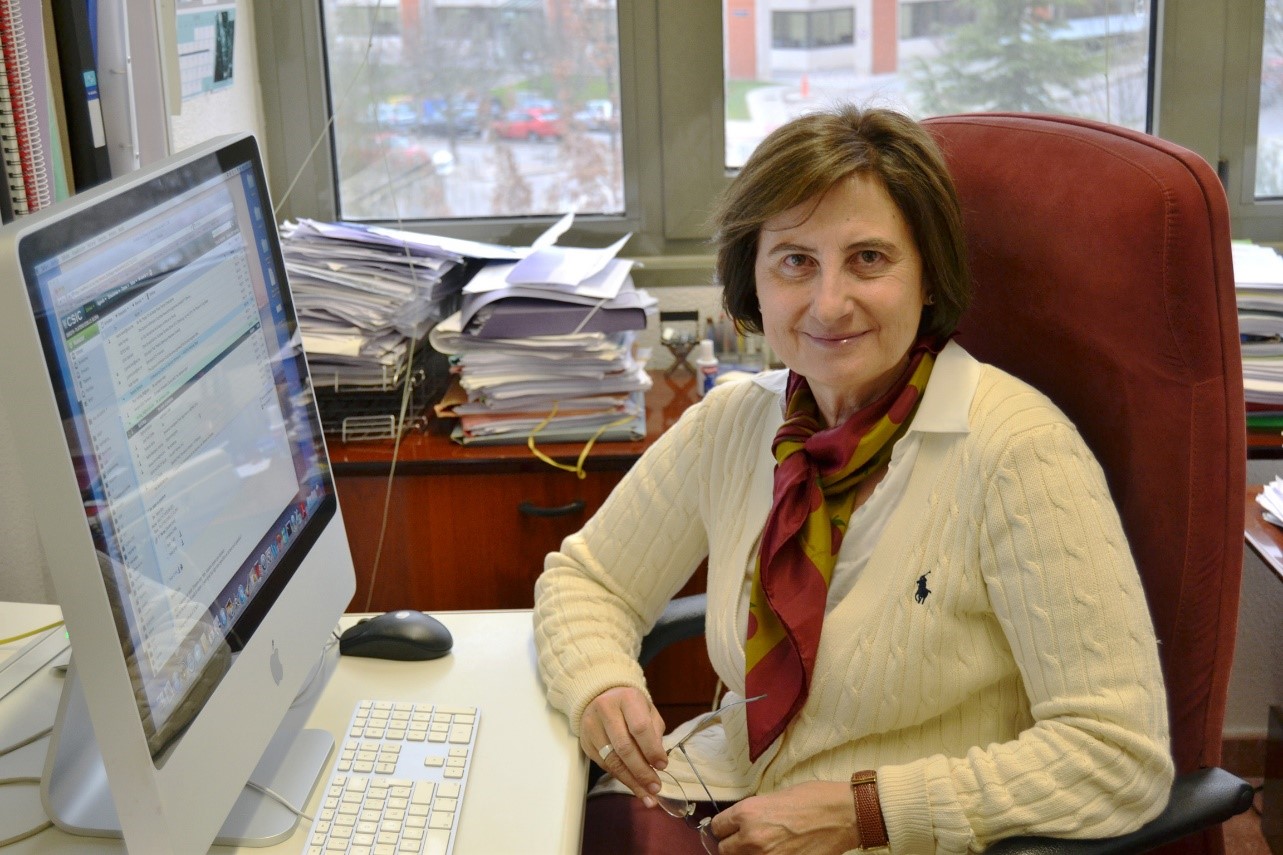 La investigadora del Consejo Superior de Investigaciones Científicas, reconocida por la Sociedad Europea de Física, reflexiona sobre su carrera y la situación de la mujer en ciencia.
La investigadora del Consejo Superior de Investigaciones Científicas, reconocida por la Sociedad Europea de Física, reflexiona sobre su carrera y la situación de la mujer en ciencia.
Leer la entrevista
Gloria Platero was awarded the 2023 EPS Emmy Noether Distinction
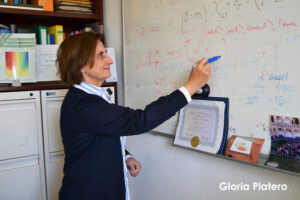
The EPS has decided to award the 2023 EPS Emmy Noether Distinction (full career) to Gloria Platero, research professor at the Materials Science Institute of Madrid of the Spanish National Research Council (CSIC), «in recognition of her remarkable contributions to the theoretical understanding of out-of-equilibrium (Floquet) systems and their impactful application to quantum materials, for her excellent mentorship of young researchers and for tirelessly fostering female talent in physics.»
Prof. Gloria Platero studied Physics at the Autonomous University of Madrid (UAM) and received her PhD in Condensed Matter Physics there in 1984. After working as assistant professor in Madrid, she did her postdoc at the Max Planck Institute for high magnetic fields in Grenoble and then joined the Materials Science Institute of Madrid first as a postdoc, then as staff researcher. She progressed to Director of the Condensed Matter Theory Department and she was also Honorary Professor at the UAM. She was involved in several EU networks and was invited for research stays in different international research centers. From 2017 till 2021 she was Mercator Fellow at the University of Regensburg. She is Fellow of the APS (Quantum Information Division) and Secretary of the C8 Commission (Semiconductors) of the IUPAP. She will become Chair on January 2025.
Along the years, she has investigated time periodic driven systems (a topic known as Floquet Engineering). Her research, in the field of Quantum Nanotechnologies, focuses on the theory of spin qubits in quantum dot arrays, their manipulation and the transfer of quantum information.
Recently, she also investigates the role of the topological edge states in low dimensional topological insulators for the transfer of quantum information with high fidelity.
Seminar: Photon-Resolved Floquet Theory and its application to quantum sensing
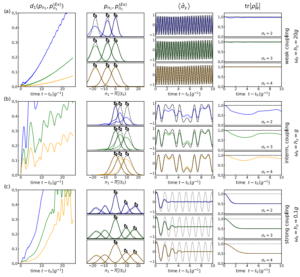
Georg Engelhardt, from the Southern University of Science and Technology in the Shenzhen Institute of Quantum Science and Engineering, will give a seminar entitled «Photon-Resolved Floquet Theory and its application to quantum sensing».
Date: April 11th, 2024, 12:00
Location: Seminar Room (182), ICMM-CSIC
Quantum sensing uses quantum properties of matter to enhance the sensitivity in precision measurements. Besides others, it already finds important applications in atomic clocks, for medical purposes, and in the search for dark matter. Many currently employed quantum sensing protocols exhibit a simple setup, in which a laser probes the optical properties of an ensemble of atoms, molecules, or other quantum emitters, which are subject to the external stimulus to be measured. An important figure of merit to predict the sensitivity is the signal-to-noise ratio. While it is easy to theoretically calculate the signal, the accurate prediction of the noise is challenging.
Motivated by this, we have developed the Photon-Resolved Floquet Theory (PRFT), which besides predicting the state of a driven quantum system (e.g., the atom or molecule), can also predict the number of photons exchanged with the coherent driving field [1,2]. To this end, the PRFT introduces counting fields into the semiclassical equations of motions, that track the photons in the driving field. Interestingly, the PRFT predicts light-matter entanglement in the Floquet-state basis. This effect can be employed to devise a measurement-based quantum communication protocol, which has favorable scaling properties over long distances. We apply the PRFT to spectroscopy, where it can predict the Fisher information of coherent spectroscopic signals [3]. The PRFT thus opens new paths to design and optimize quantum sensors based on AMO systems, which might assist in the discovery of new physics.
[1] G. Engelhardt, S. Choudhury, and W. V. Liu, Phys. Rev. Research 6, 013116 (2024)
[2] G. Engelhardt, JY. Luo, V. M. Bastidas, and G. Platero, arXiv: 2311.01509
[3] G. Engelhardt et al., in preparation
Seminar: Dissipation as versatile resource for collective quantum dynamics
Christopher W. Wächtler, from the University of California at Berkeley, will give a seminar entitled «Dissipation as versatile resource for collective quantum dynamics».
Date: April 16th, 2024, 12:00
Location: Salón de Actos, ICMM-CSIC
The widespread belief is that quantum systems need to be protected from the environment as well as possible for quantum technology to fulfill its promise of revolutionizing computing, communication, and sensing. However, the advent of the Noisy Intermediate-Scale Quantum (NISQ) era forces us to investigate dissipation and decoherence and to find ways to utilize them effectively. This talk aims to provide examples where interactions with the environment play a pivotal role in generating and detecting collective quantum phenomena, inspiring new perspectives on harnessing environment interactions for advancing quantum technologies. Firstly, we will delve into the emerging field of topological quantum synchronization, a novel form of synchronization where topology and dissipation intertwine to protect synchronized dynamics against perturbation. Next, we will explore how carefully tailored interactions with the environment induce energy migration within small quantum spin networks characterized by a superradiant speed-up, demonstrating the potential for utilizing dissipation as a resource rather than a hindrance. Finally, if time permits, I will introduce a novel methodology for probing quantum criticality in non-equilibrium systems. This method circumvents the shortcomings of standard perturbative expansions, enabling a comprehensive and thermodynamically consistent understanding of critical phenomena in systems coupled to non-Markovian reservoirs.
Gloria Platero elected a Fellow of the American Physical Society
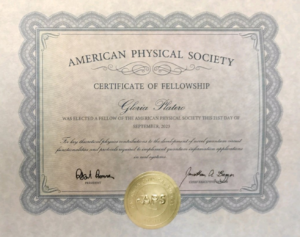
Gloria Platero was elected a Fellow of the American Physical Society on 21st September, 2022, for key theoretical physics contributions to the development of novel quantum circuit functionalities and protocols required to implement quantum information applications in real systems.
Fast quantum transfer mediated by topological domain walls
Juan Zurita, Charles Creffield and Gloria Platero

Abstract
The duration of bidirectional transfer protocols in 1D topological models usually scales exponentially with distance. In this work, we propose transfer protocols in multidomain SSH chains and Creutz ladders that lose the exponential dependence, greatly speeding up the process with respect to their single-domain counterparts, reducing the accumulation of errors and drastically increasing their performance, even in the presence of symmetry-breaking disorder. We also investigate how to harness the localization properties of the Creutz ladder-with two localized modes per domain wall-to choose the two states along the ladder that will be swapped during the transfer protocol, without disturbing the states located in the intermediate walls between them. This provides a 1D network with all-to-all connectivity that can be helpful for quantum information purposes.
Thesis Defense: Topological Systems Interacting with Classical and Quantum Light, by Beatriz Pérez González
On March 17th, one of our Ph.D. students, Beatriz Pérez González, will defend her thesis entitled: Topological Systems Interacting with Classical and Quantum Light.
Abstract
In the field of quantum materials, there is an ubiquitous quest for different strategies to control and manipulate their properties. Along this direction, driving materials out of equilibrium with a time-periodic modulation has proven to be an efficient tool for realizing unconventional configurations as transient states, or even novel out-of-equilibrium phases. In these systems, known as Floquet materials, the electronic degrees of freedom are dressed by the interaction with the electric field, which can be exploited to engineer the electronic, dynamical and topological properties of materials. In solid-state platforms, such fields can be implemented by shining classical light, i.e., a high-intensity laser, on the sample.
In recent years, the idea of using quantum light for the same task has gathered considerable attention. In these set-ups, the high-intensity laser can be replaced by individual photons trapped inside a quantum cavity that are made to interact coherently with a quantum material. Although there are crucial differences between both approaches, the strategies of driven systems can guide this new research route, and the resulting hybrid systems have been denominated cavity quantum materials.
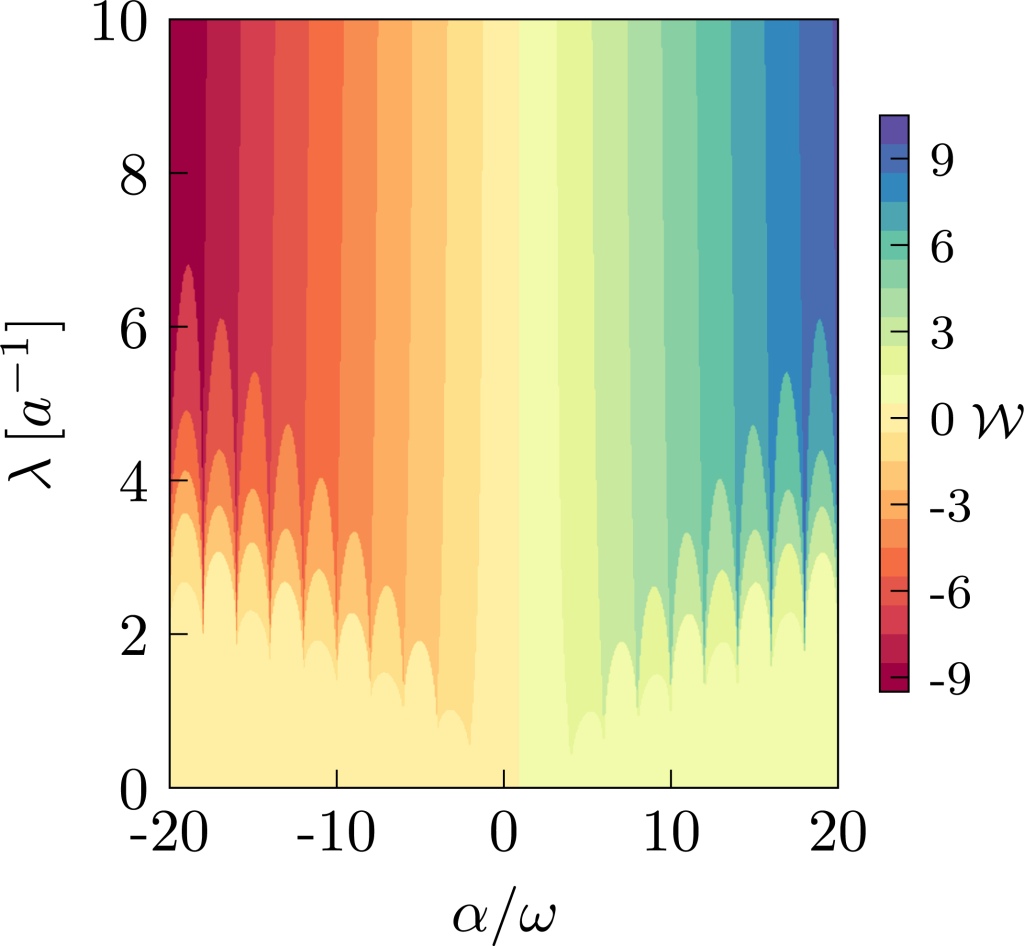
The present dissertation explores the interaction of both classical and quantum light with a particular class of quantum materials: topological insulators. The non-trivial topological properties of the bulk, which can be characterized by the value of a topological invariant, are related with the physics at the boundary, and lead to the appearance of topologically protected edge states. From a theoretical point of view, we investigate how the interaction with light can alter the topological features of a system, in two different aspects: first, by modifying the existing phase or by inducing non-trivial features in an otherwise trivial sample, and second, by hindering them. For this, different issues have to be addressed: are there any broken symmetries in the interacting system? What is the fate of the edge states in a finite system? Are they topologically protected? Is the topological invariant well-defined? From these questions it becomes clear that complete characterization of topological phases requires studying both the boundary and the bulk physics.
New Editors’ Suggestion: Proposal for Detection of the 0′ and π′ Phases in Quantum-Dot Josephson Junctions
We are pleased to announce our latest article and thank the APS for considering it an Editors’ Suggestion on PRL. Congrats, everyone!
Minchul Lee, Rosa López, H. Q. Xu, and Gloria Platero
Phys. Rev. Lett. 129, 207701
The competition between the Kondo correlation and superconductivity in quantum-dot Josephson junctions (QDJJs) has been known to drive a quantum phase transition between 0 and π junctions. Theoretical studies so far have predicted that under strong Coulomb correlations the 0−π transition should go through intermediate states, 0′ and π′ phases. By combining a nonperturbative numerical method and the resistively shunted
junction model, we investigated the magnetic-field-driven phase transition of the QDJJs in the Kondo regime and found that the low-field magnetotransport exhibits a unique feature which can be used to distinguish the intermediate phases. In particular, the magnetic-field driven π′−π transition is found to lead to the enhancement of the supercurrent which is strongly related to the Kondo effect.
Group Seminar: Controlling Topological Phases of Matter with Quantum Light
Olesia Dmytruk, from the CNRS, Collège de France, PSL Research University, Paris
Date: November 22, 2022, 12:00h
Location: Instituto de Ciencias de Materiales de Madrid (ICMM-CSIC), Salón de Actos
Abstract:
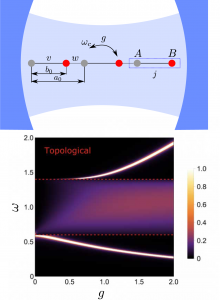
Controlling the topological properties of quantum matter is a major goal of condensed matter physics. A major effort in this direction has been devoted to using classical light in the form of Floquet drives to manipulate and induce states with non-trivial topology. A different route can be achieved with cavity photons. In this talk, I will discuss a prototypical model for topological phase transition, the one-dimensional Su-Schrieffer-Heeger (SSH) model, coupled to a single mode cavity [1]. I will demonstrate that quantum light can affect the topological properties of the system, including the finite-length energy spectrum hosting edge modes and the topological phase diagram. In particular, I will show that depending on the lattice geometry and the strength of light-matter coupling one can either turn a trivial phase into a topological one or vice versa using quantum cavity fields. Furthermore, the polariton spectrum of the coupled electron-photon system contains signatures of the topological phase transition in the SSH model.
References:
[1] Olesia Dmytruk and Marco Schiró, Controlling topological phases of matter with quantum light, arXiv:2204.05922.
Group Seminar: Illuminating van der Waals materials: from graphene to twisted MoS2
Marta Prada, from the Institute for Theoretical Physics, Universität Hamburg, will give a seminar entitled «Illuminating van der Waals materials: from graphene to twisted MoS2».
Date: October 11th, 2022, 11:00h.
Location: Instituto de Ciencias Materiales de Madrid (ICMM-CSIC)
We address the low-lying energy levels of van-der Waals structures via resistively-detected electron spin resonance (ESR). In graphene, the structure of the topological bands is reflected in transport experiments, where our numerical models allow us to identify the resonance signatures. We resolve the intrinsic spin-orbit gap [1], the g-factor anisotropic corrections [2, 3], the sub-lattice splitting [4], and the hyperfine-induced splitting in 13C-based graphene [5]. Using Floquet formalism, we find theoretical evidence of a topological transition by illuminating an ideal sample of graphene and the connection between angular momentum and sublattice spin. Finally, we study twisted MoS2 samples, where we resolve low-lying Moiré bands near the conduction band.
Keywords: Twisted bilayer MoS2, Moiré, superlattices, Mini-bands, Schottky barrier, Resonant Tunneling,
Transition metal dichalcogenides
[1] J. Sichau, M. Prada, T. Anlauf, T. J. Lyon, B. Bosnjak, L. Tiemann, and R. H. Blick, Phys. Rev. Lett. 122, 046402 (2019).
[2] M. Prada, L. Tiemann, J. Sichau and R. H. Blick. Phys. Rev. B 104, 075401 (2021).
[3] M. Prada, Phys. Rev. B 103, 115425 (2021).
[4] R. Singh, M. Prada, V. Strenzke, B. Bosnjak, T. Schmirander, Lars Tiemann, and Robert H. Blick. Phys. Rev. B 102, 245134 (2020).
[5] V. Strenzke, Phys. Rev. B 105, 144303 (2022).

